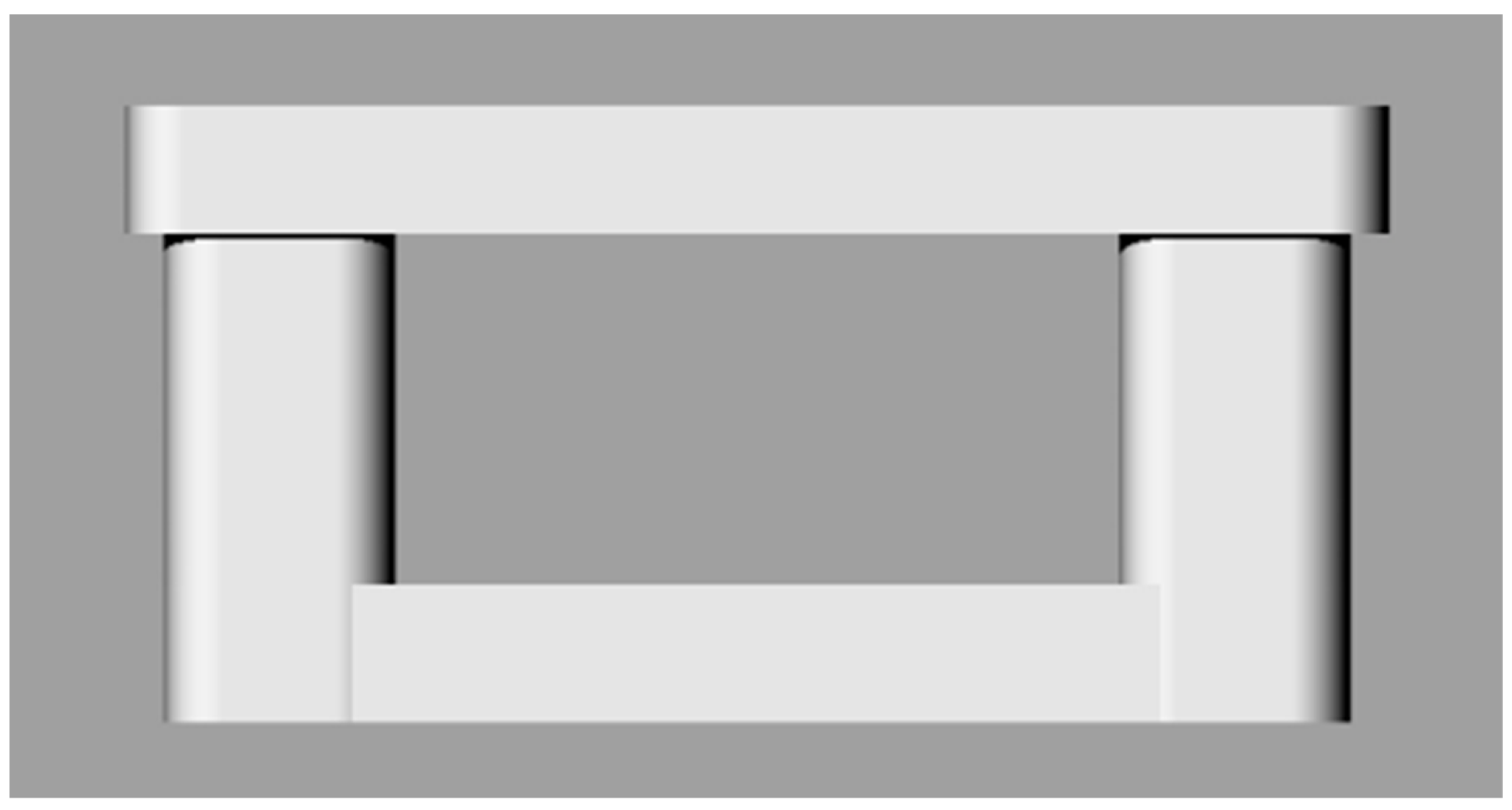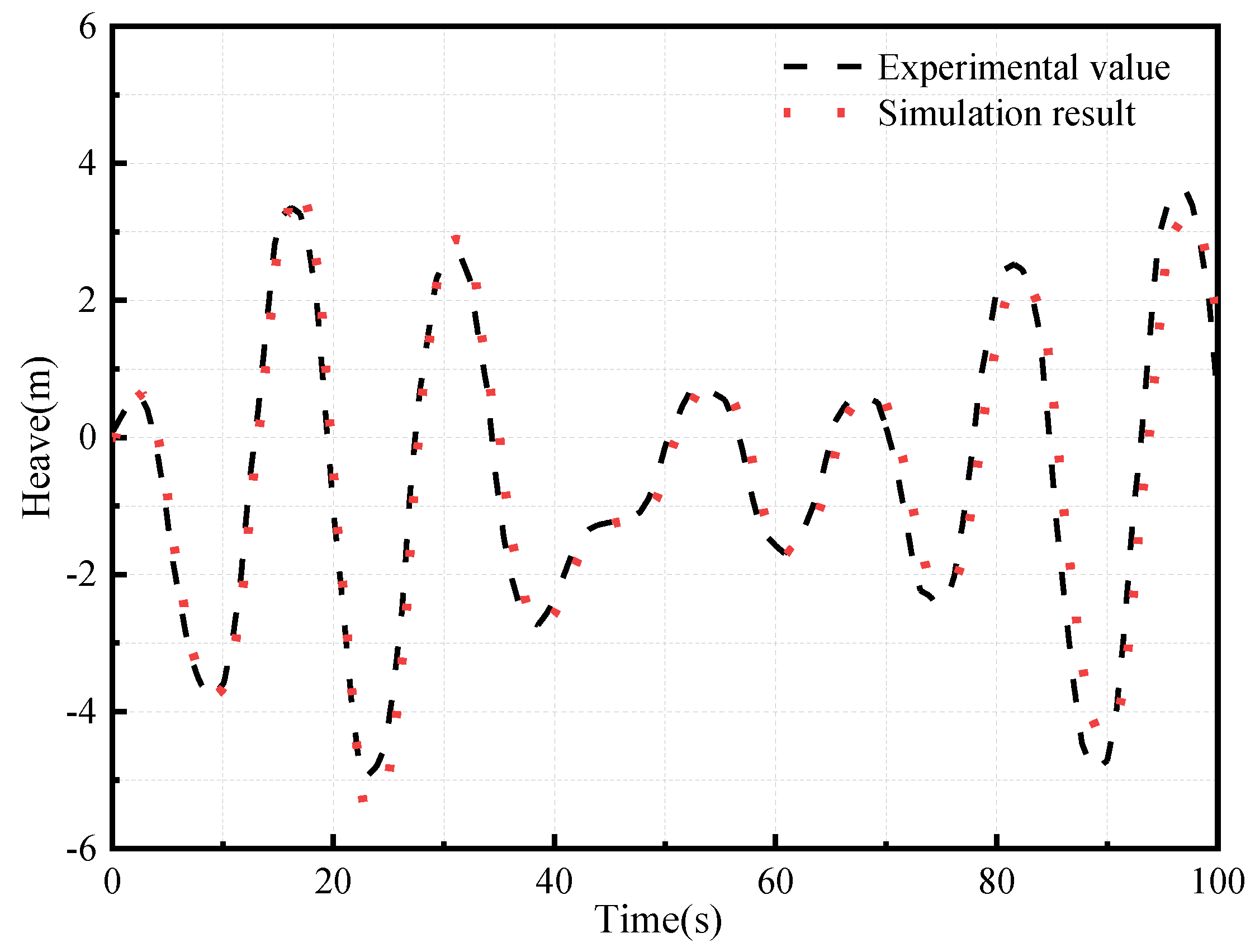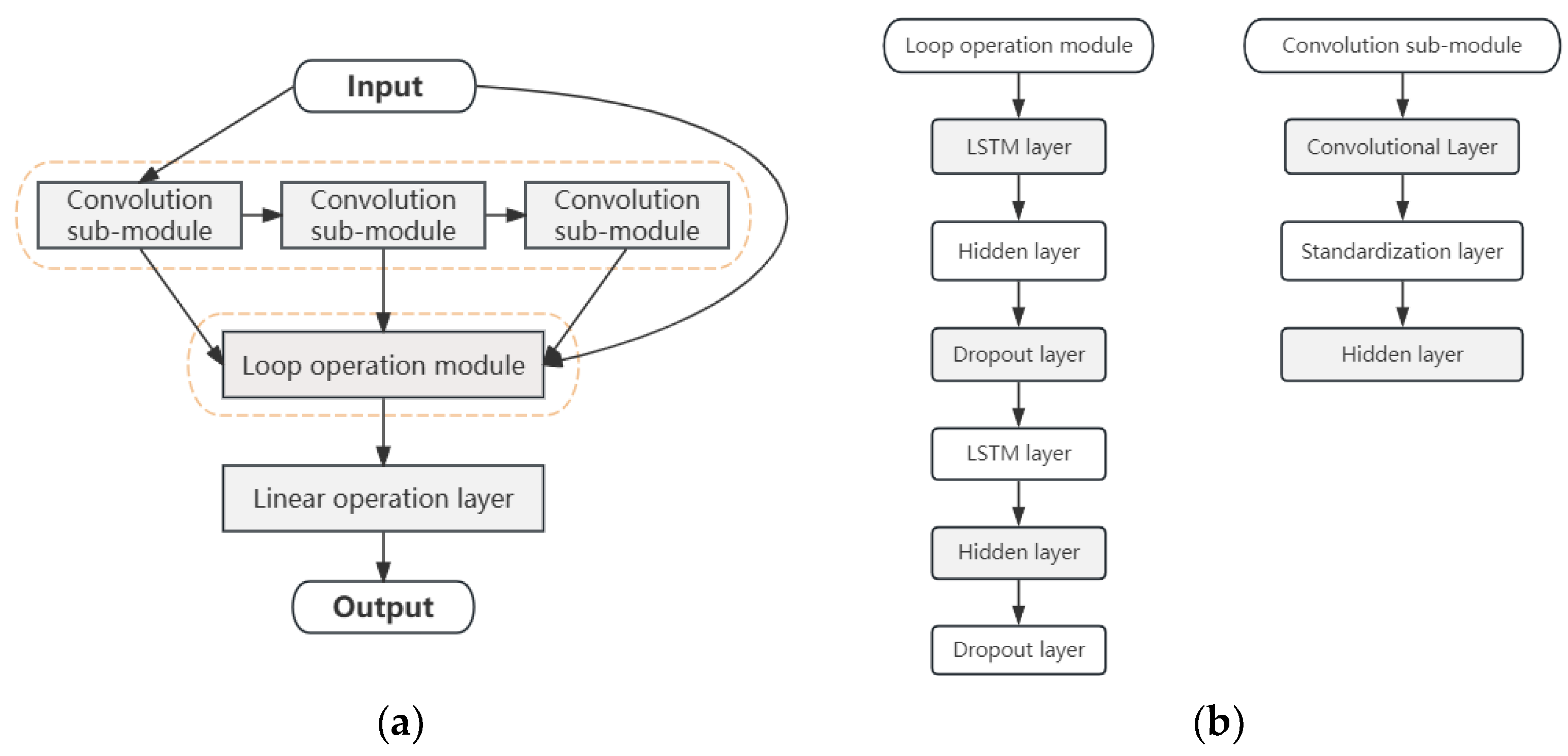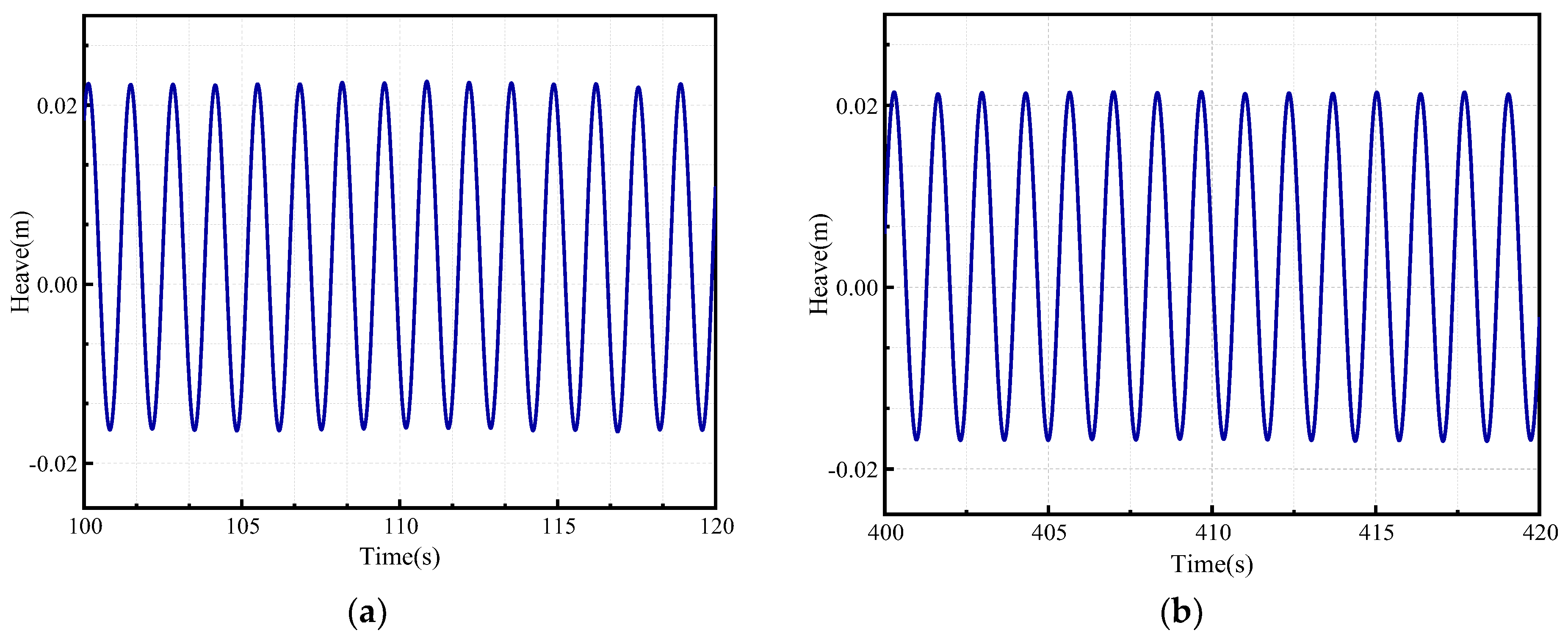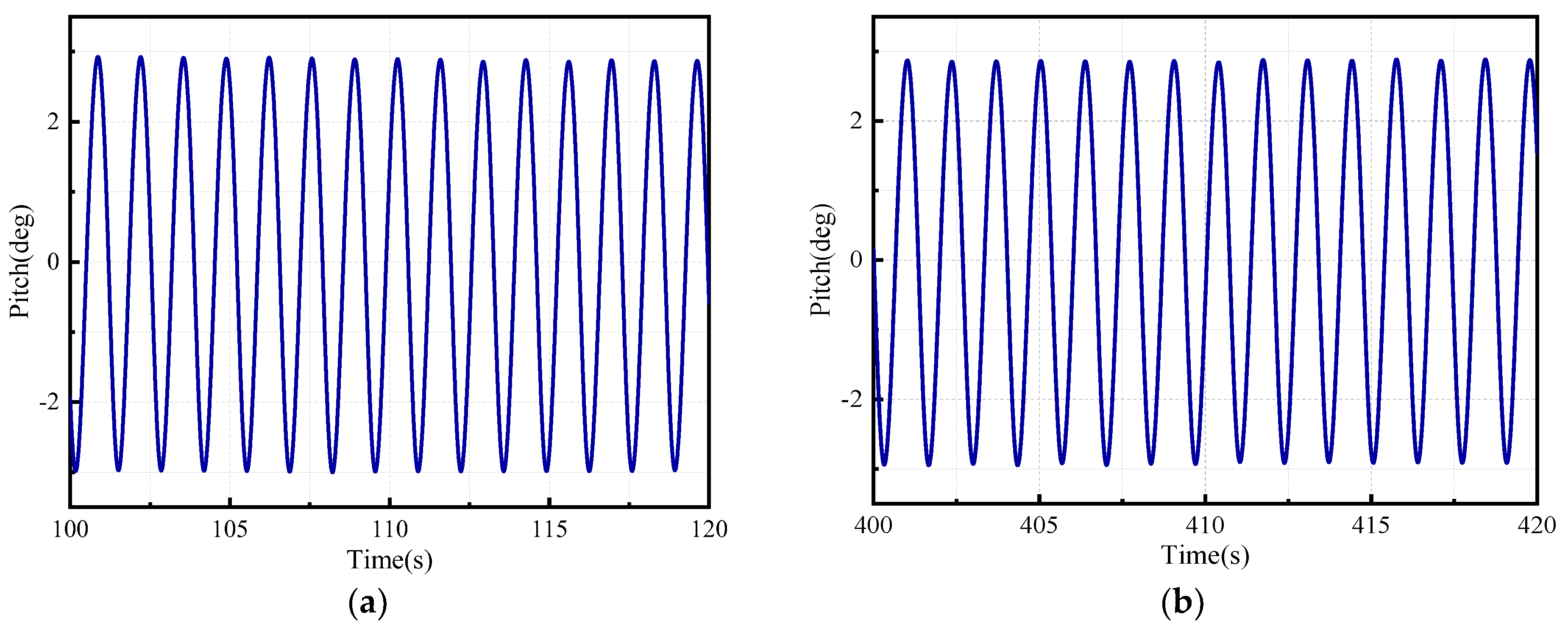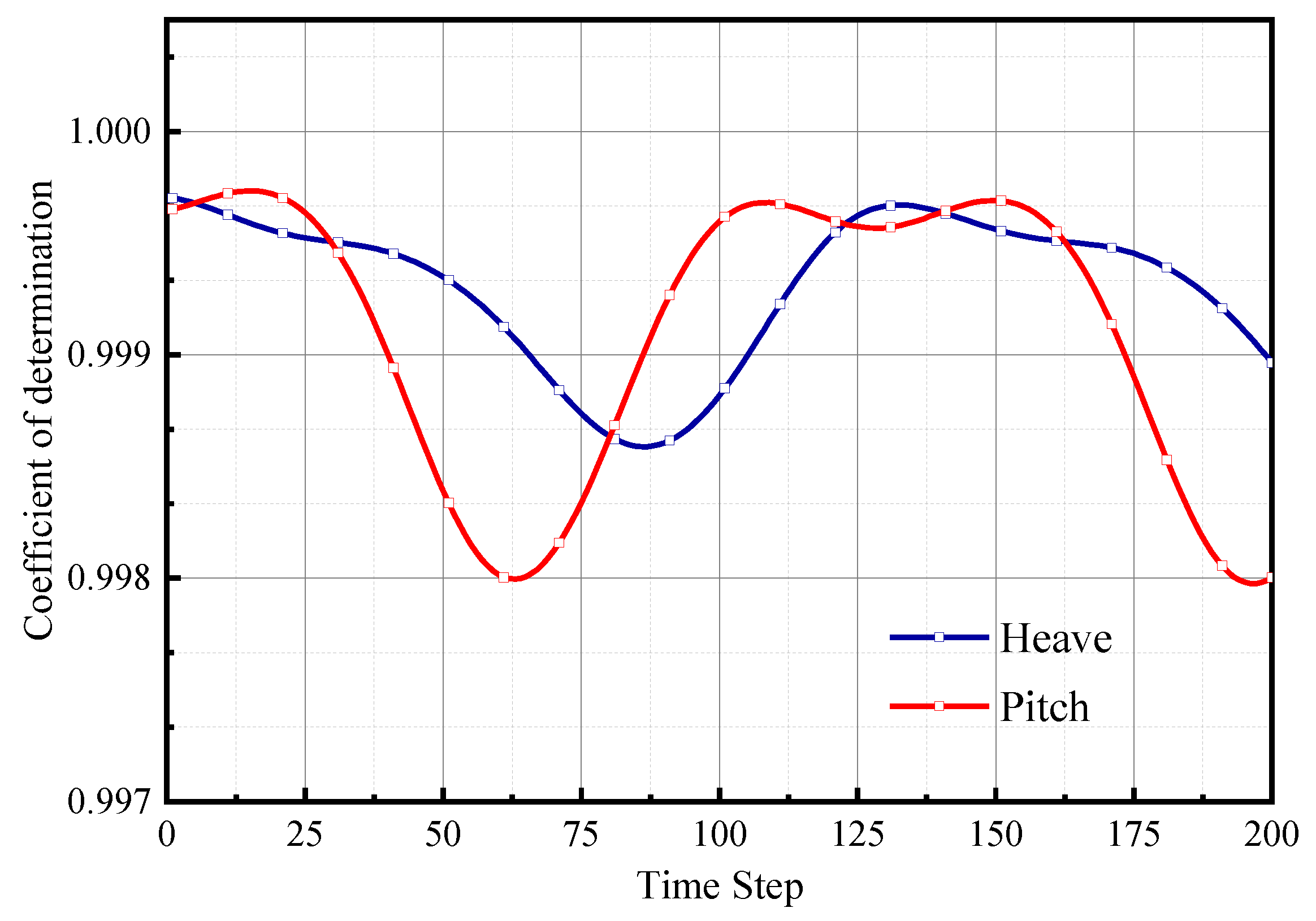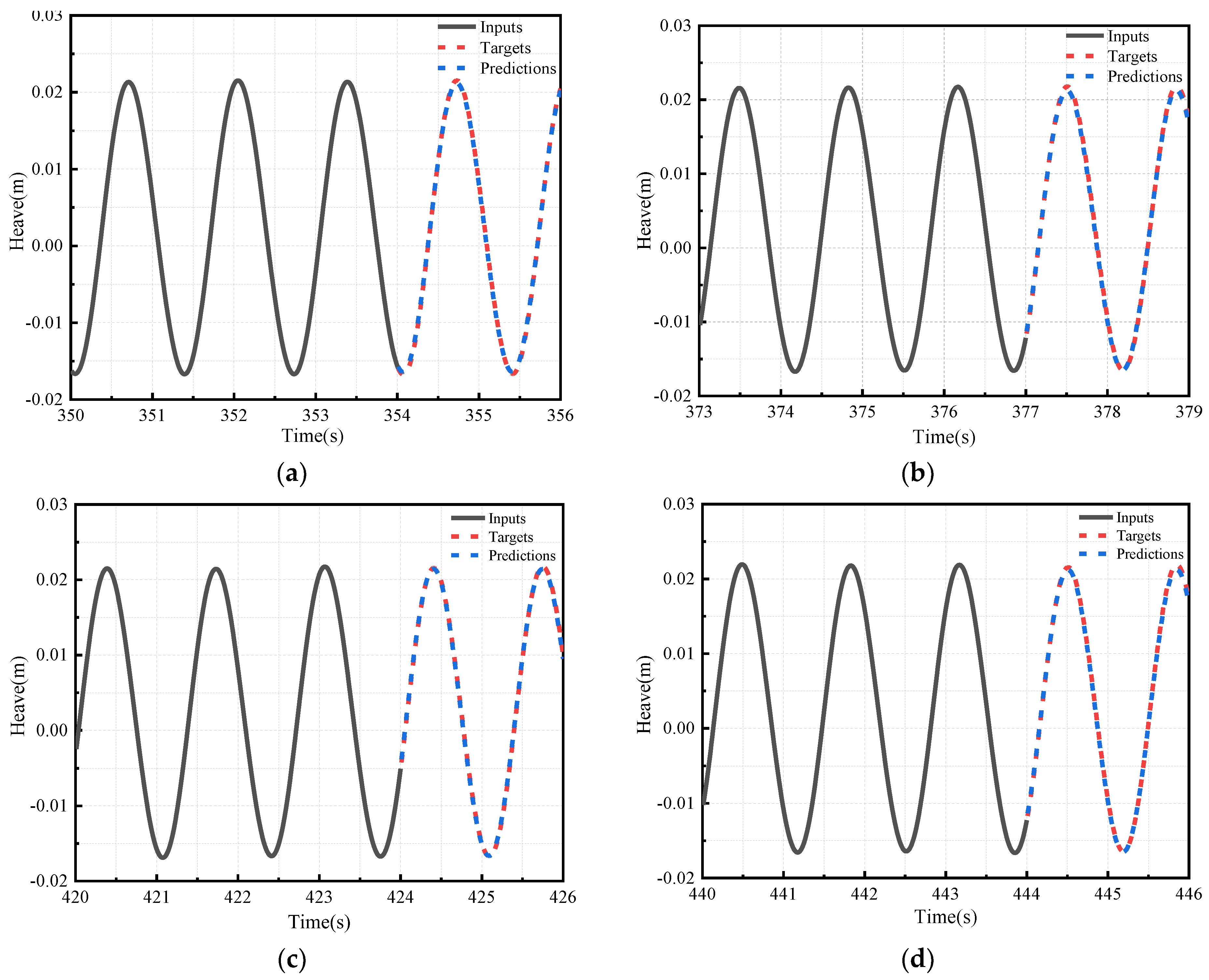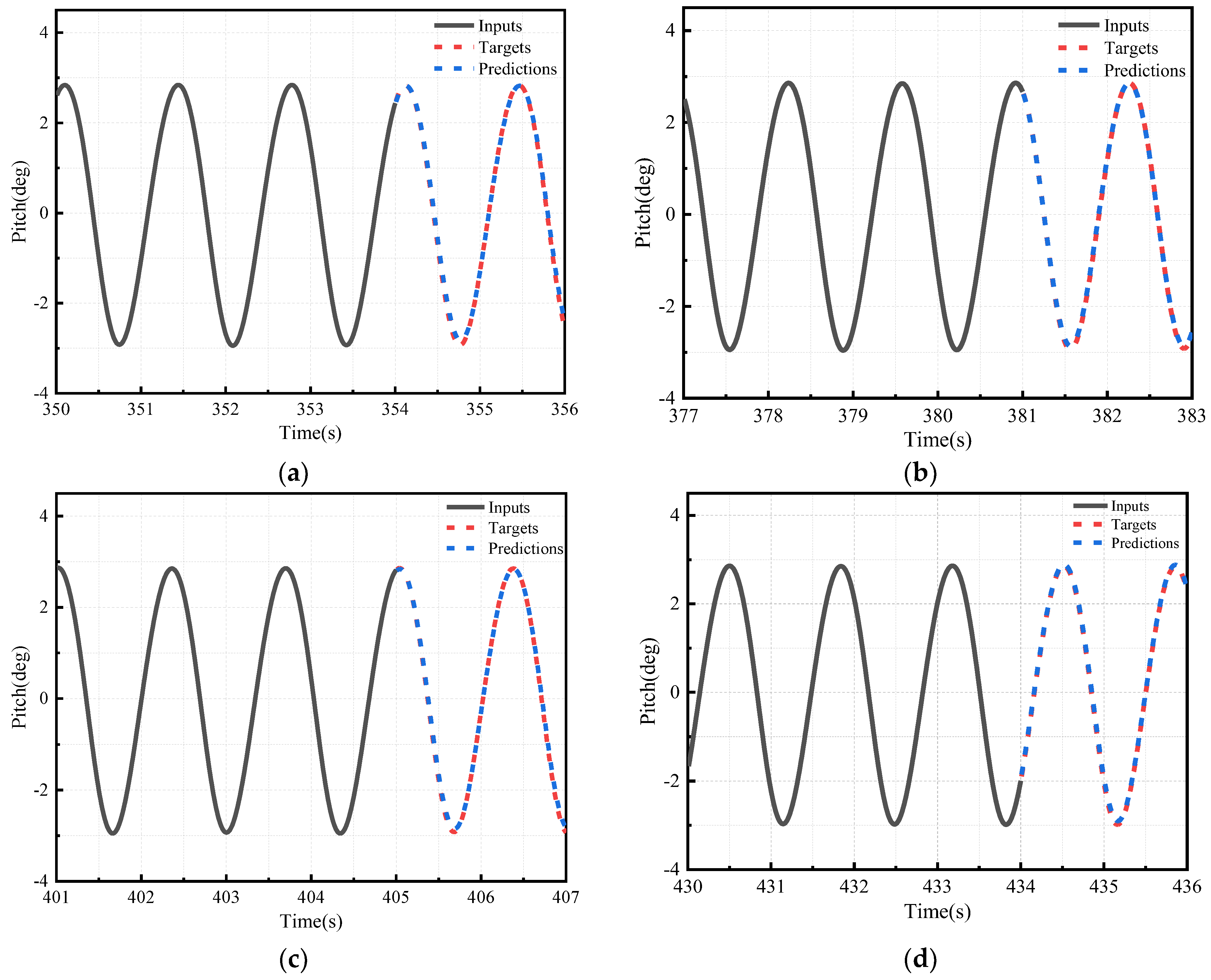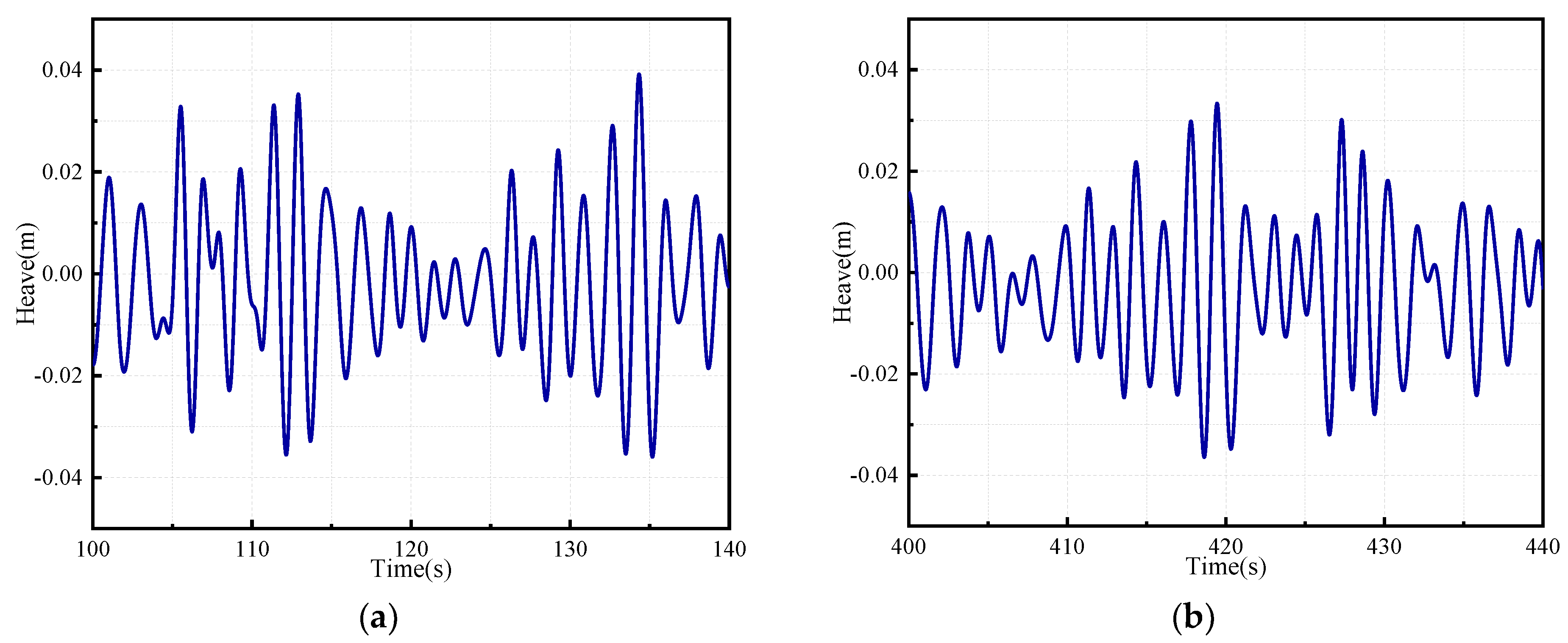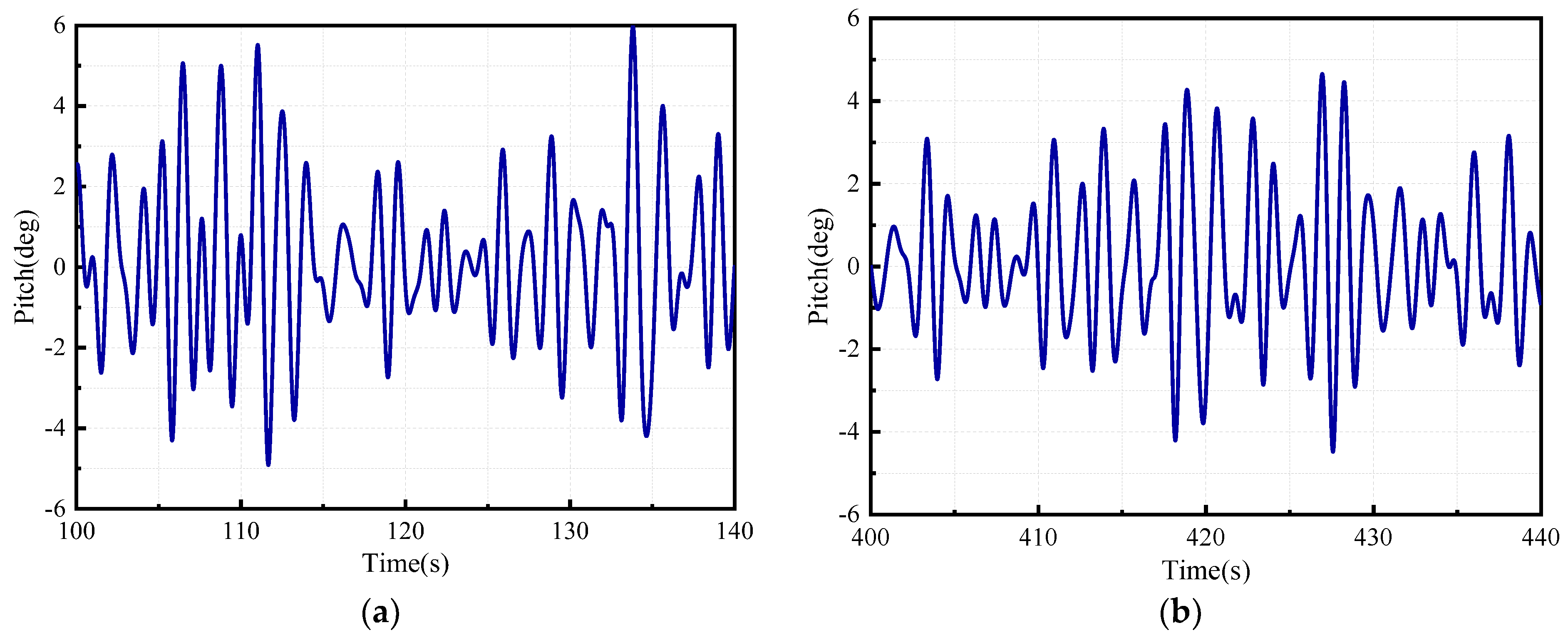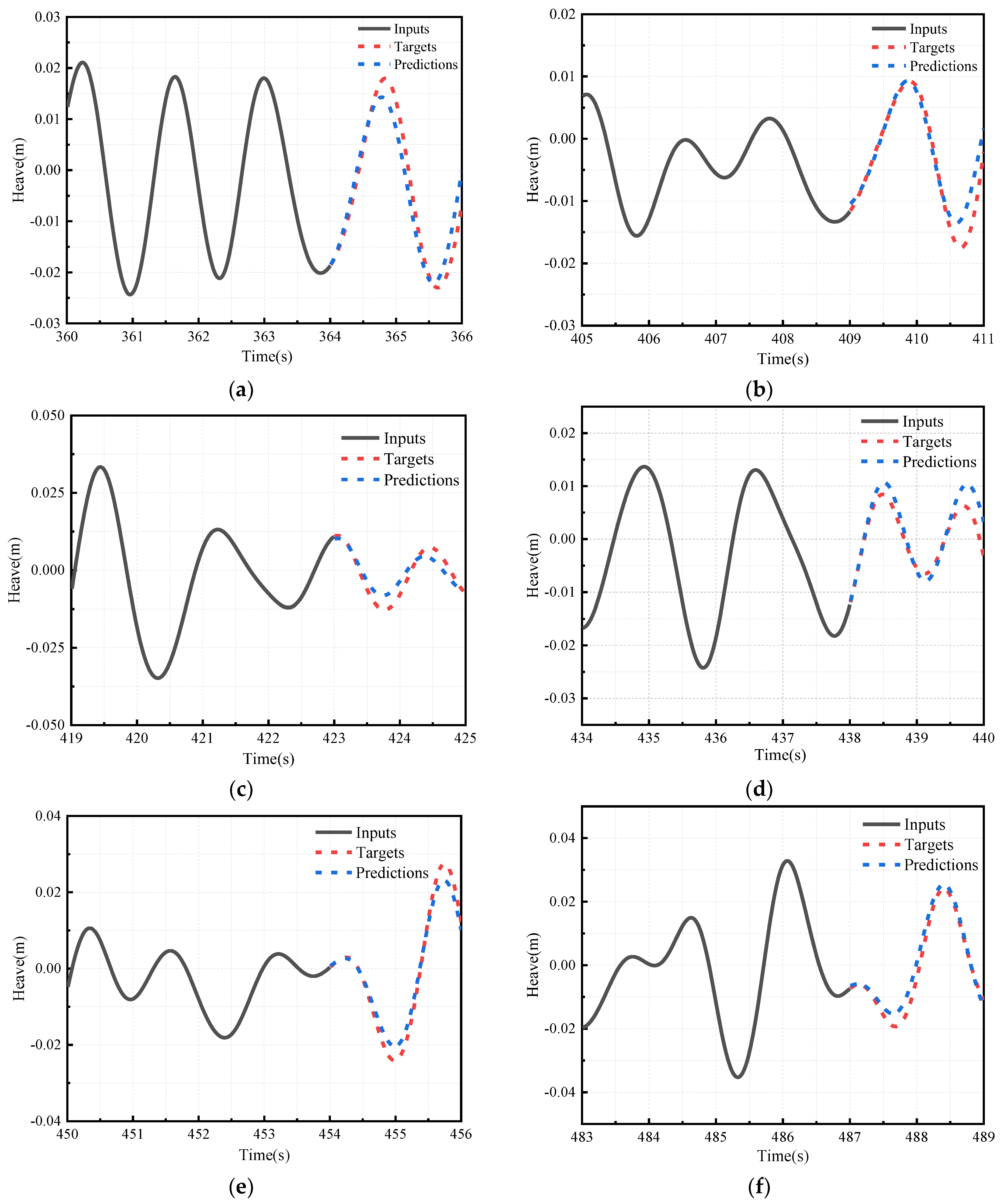The expansion of marine resource development into deep-sea areas has made offshore platforms crucial equipment for offshore operations. In the dynamic sea environment, these platforms are inevitably subjected to stochastic environmental influences, resulting in complex translational and rotational motions. These movements can significantly impact operational efficiency, personnel safety, and equipment performance [
1]. Consequently, accurately predicting the motion response of offshore platforms has become an urgent and important issue to address. With the advancement of computer technology and increased computing power, we have entered a new era of big data and artificial intelligence. Emerging frontier technologies such as big data, Internet of Things, and cloud computing are continuously evolving, with artificial intelligence leading social transformation and profoundly influencing our daily lives, learning, and work [
2]. In particular, artificial intelligence technologies represented by neural networks have made significant achievements in fields like fluid dynamics, continuously driving the development of these areas.
In recent years, substantial progress has been achieved in the domain of marine environmental modeling and ship motion prediction through the application of diverse machine learning techniques and hybrid modeling approaches. Yidong Xie [
3] integrates singular spectrum analysis (SSA) with long short-term memory (LSTM) neural networks to establish an SSA-LSTM hybrid model for predicting sea level change based on sea level anomaly datasets from 1993 to 2021. Tianao Qin [
4] proposed an improved HTM model, which incorporates the gated recurrent unit (GRU) neurons into the time memory algorithm. The improved model is superior to the original model in both short-term and long-term prediction, and compared with the GRU model that is proficient in long-term prediction, the result error is lower and the model stability is better. Zhuxin Ouyang [
5] proposed an integrated method combining empirical mode decomposition (EMD) and TimesNet, and introduced the EMD-TimesNet model for SWH prediction to accurately predict significant wave height under different sea conditions. Xianrui Hou [
6] proposed a short-term prediction method of ship roll motion in waves based on a convolutional neural network (CNN), which effectively realized the accurate prediction of ship roll motion in waves. Ivana Martić [
7] used an artificial neural network to predict the additional resistance coefficient of container ships in regular head waves at different speeds. The results show that the model can reliably predict the increased resistance coefficient in the preliminary design stage of the ship according to the characteristics and speed of the ship. Ismail Elkhrachy [
8] used the Sverdrup Munk–Bretschneider (SMB) semi-analytical method, emotional artificial neural network (EANN) method, and wavelet artificial neural network method to estimate the wave parameters of the Gulf of Mexico and the Aleutian Basin, evaluate the accuracy and reliability of these methods, and study the spatial and temporal variability of the wave field. Lifen Hu [
9] proposed a predictive control strategy for an active heave compensation system, which uses a machine learning prediction algorithm to minimize the heave motion of the crane payload. The reliability of the back propagation neural network and the long short-term memory recurrent neural network prediction algorithm is proved by using the proportional integral differential control with predictive control. Dajing Gu [
10] proposed a method of manually generating wave images and hull motion pose data sets through physical engines. Nan Gao [
11] proposed a prediction model based on improved empirical mode decomposition and dynamic residual recurrent neural network with bidirectional structure and time-mode attention mechanism, and proposed a new algorithm: the dynamic adaptive beetle swarm antenna search (DABSAS) algorithm to optimize the initial weight and threshold of the prediction model. Ximin Tian [
12], based on the LSTM neural network, established a mapping relationship between wave height and ship rolling motion. The results show that the prediction scheme considering wave height input factor can greatly improve the prediction accuracy and effective prediction time. Miao Gao [
13] developed an online real-time ship behavior prediction model by constructing a bidirectional long short-term memory recurrent neural network suitable for automatic identification system date and time sequence characteristics and online parameter adjustment. In addition, in the early development of neural networks, there are also a lot of research in the field of ship and sea. Wang Kejun and Li Guobin [
14] first applied an autoregressive neural network to predict the roll motion of ships in a time series, achieving satisfactory forecasting results. Xu Pei et al. [
15], within the autoregressive neural network framework, introduced an improved strategy that combines the backpropagation algorithm and time series differencing algorithm, effectively enhancing prediction accuracy. Xie Meiping et al. [
16] achieved effective predictions for selected sample data with a lead time of up to 10 s, establishing ship motion modeling and forecasting methods based on Deep Recurrent Neural Networks and projection pursuit. In 2005, Khan et al. [
17], based on a three-layer artificial neural network, achieved high-precision prediction of ship motion for a duration of 7 s. In 2008, Khan et al. [
18] used artificial neural networks for roll motion prediction, where the prediction confidence was approximately 60% for a 6 s forecast horizon, which decreased to 40% when extended to 10 s. Li Haobo et al. [
19] established an ultra-short-term online prediction method for the motion response of floating offshore platforms based on LSTM, utilizing wave time series information as input for response prediction. Wu Yunfeng et al. [
20] applied the wavelet multi-scale analysis method to decompose non-stationary time series into multiple approximately stationary sub-sequences, subsequently employing the Volterra Adaptive Predictive Model under Chaos Theory to forecast each reconstructed signal layer. Hou Jianjun et al. [
21] developed an RBF neural network model based on chaos theory phase space reconstruction techniques, which was utilized for predicting ship oscillatory motion. S. Biswas [
22] extracted useful features from local current signals and further used them to generate red green blue images for convolutional neural network classifiers to improve fault detection and classification.
The study of offshore platform motion prediction using neural networks aims to accurately forecast the motion state of offshore platforms in the near future. This is achieved by analyzing large amounts of historical data and leveraging the deep learning capabilities of neural network models. Neural networks are capable of recognizing and processing complex nonlinear relationships within historical data, as well as the combined effects of various environmental factors, demonstrating strong adaptability and learning capabilities. This approach helps in the timely identification of potential risks, prevention of accidents, reduction of operational risks, and provides solid technical support for the sustainable development of ship transportation and offshore engineering. In this study, we first employed the STAR-CCM+2022.1 software to conduct numerical simulations of existing physical experimental data, thereby validating the accuracy of the numerical simulation method. Subsequently, the dynamic responses of offshore platforms under the influence of regular and irregular wave conditions were simulated. To enhance the predictive accuracy, an innovative hybrid forecasting model was proposed, integrating Residual Convolutional Neural Networks (RCNN) with Long Short-Term Memory (LSTM) networks. This model leverages deep learning algorithms to significantly augment the extraction of pertinent features, thereby refining the precision of predictions. Furthermore, a comprehensive evaluation of the forecasting model’s efficacy was conducted employing a triad of evaluative metrics: the Coefficient of Determination (R2), Mean Squared Error (MSE), and Mean Absolute Percentage Error (MAPE). These metrics facilitated a multidimensional error analysis of the model’s predictive outcomes, ensuring the reliability and validity of the prognostications.

